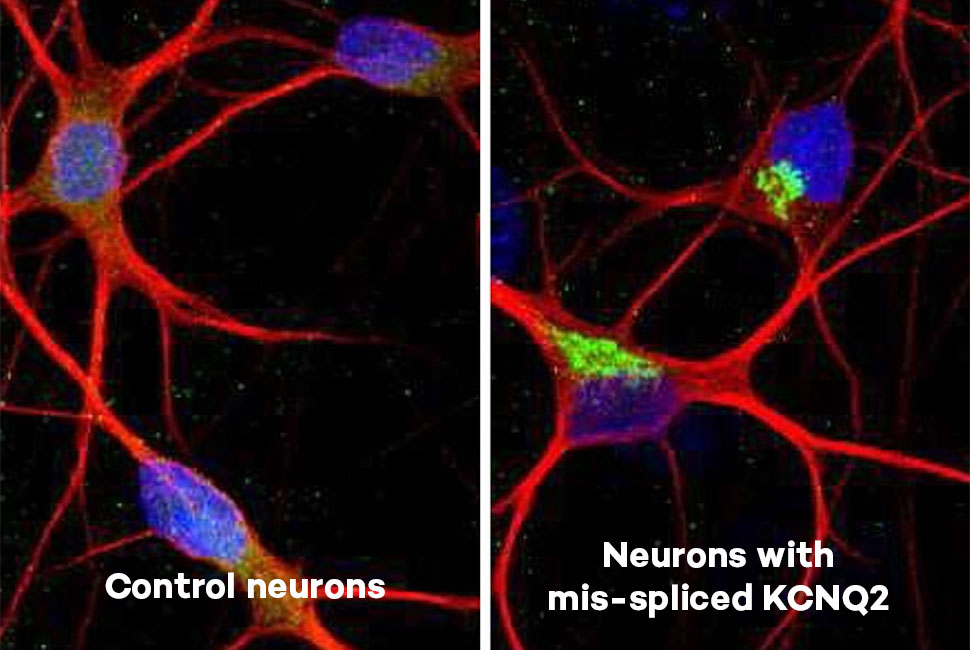
"The findings not only explain a long-standing mystery of why nerve cells overfire in ALS and FTD but also highlight a promising new drug to slow or prevent disease progression. ALS, which attacks the spinal cord's motor neurons and causes progressive weakness and muscle atrophy, affects about 350,000 people worldwide. FTD leads to atrophy in the brain's frontal and temporal lobes, which are known to control personality, behavior and language."
"While ALS and FTD are quite different, a consistent but poorly explained feature of both diseases is neuronal hyperexcitability in which neurons fire too much and too easily. Previous research has found nearly all ALS and as many as half of FTD cases share one hallmark problem: the protein TDP-43 moves from its normal location, the nucleus, to the cytoplasm, and disrupts normal cellular function."
TDP-43 relocates from the nucleus to the cytoplasm in most ALS and many FTD cases, disrupting normal cellular function. TDP-43 malfunction alters splicing of KCNQ2, a potassium channel that acts as a brake on neuronal firing, removing the brake and producing neuronal hyperexcitability. Neuronal hyperexcitability correlates with increased mortality risk in ALS. A gene-targeting antisense oligonucleotide corrects KCNQ2 mis-splicing in lab-grown human neurons, restoring channel function and reducing overactivity. Restoration of neuronal excitability balance through targeted splicing correction presents a potential therapeutic approach to slow or prevent progression of ALS and FTD.
Read at News Center
Unable to calculate read time
Collection
[
|
...
]